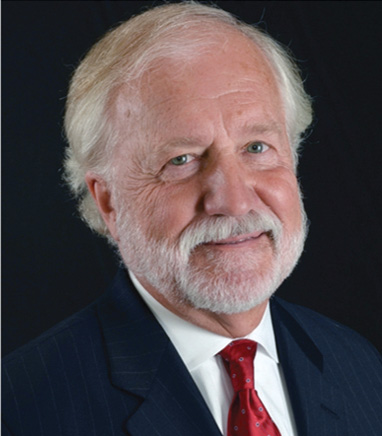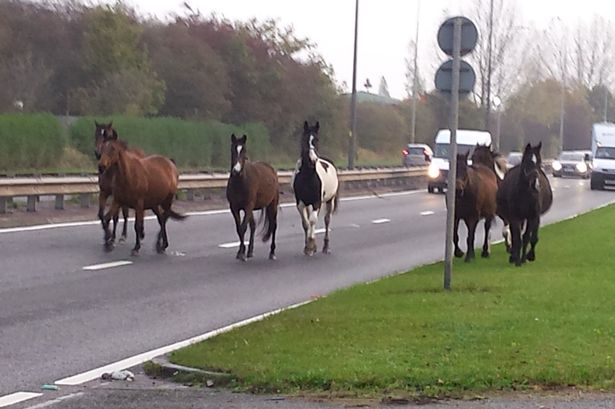 Recently, a client of mine who lives in an area damaged by Hurricane Irma found himself in a frightening situation. The fence in his pasture was damaged during the hurricane and one of his horses got out, finding its way onto a public highway. Luckily, a good Samaritan helped to capture and return the horse before it caused any damage. Still, others in similar situations might not be so fortunate.
Recently, a client of mine who lives in an area damaged by Hurricane Irma found himself in a frightening situation. The fence in his pasture was damaged during the hurricane and one of his horses got out, finding its way onto a public highway. Luckily, a good Samaritan helped to capture and return the horse before it caused any damage. Still, others in similar situations might not be so fortunate.
The question is, who’s responsible if a horse escapes and causes injury or damage?
Each state has specific Loose Livestock laws and, although you may consider your horse a family “pet,” horses fall within the definition of livestock. Generally, it is the responsibility of the owner or custodian of the horse to make sure the horse is properly contained and kept off the roadways. In that regard, each state has its own “fence-in” rules that horse owners must follow. If you own a horse, whether or not you keep the horse on your property or board it elsewhere, you should become familiar with the fencing requirements of your particular state. The National Agricultural Law Center publishes an easily searchable database of State Fence Law statutes on its website.
The Basis for Liability
It’s important to first note that, in cases where a horse escapes from its pasture and causes injury, Equine Liability Laws offer no protection. Equine Liability Laws, as we discussed in previous articles, apply specifically to those injured while participating in equine-related activities. Drivers on a pubic roadway and unsuspecting pedestrians don’t fall into that category.
That being said, most states apply a “negligence” standard to loose livestock incidents. This means that an injured person must show that that the owner and/or custodian of the horse acted in an unreasonable manner that somehow caused the horse to escape. Each case is different, and much depends upon the particular circumstances. Still, in the majority of instances, negligence revolves around proper fencing and containment.
 In many instances, negligence will be found against the owner/custodian of the horse if the fencing is not in compliance with the state statutes. In fact, some states will even apply a “negligence per se” standard, if it can be proven that the owner/keeper of the horse did not construct the fence in accordance with state regulations. Negligence per se basically means that the violation of the regulations is, in and of itself, proof of negligence.
In many instances, negligence will be found against the owner/custodian of the horse if the fencing is not in compliance with the state statutes. In fact, some states will even apply a “negligence per se” standard, if it can be proven that the owner/keeper of the horse did not construct the fence in accordance with state regulations. Negligence per se basically means that the violation of the regulations is, in and of itself, proof of negligence.
Negligence can also be found if the owner/keeper fails to maintain the fence and keep it in good repair or fails to repair a damaged fence. For example, in the situation with my client whose horse got out as a result of hurricane damage to the fence, much would depend on whether he had the opportunity to fix the fence before the horse escaped. If he had allowed the fence remain in a damaged state for several days, the chance he would be found liable would have been much greater than if the damage occurred mere minutes before the horse escaped.
To balance things out a little, a substantial number of states have adopted “Open Range” laws, which apply statewide or regionally. These Open-Range laws designate certain areas where livestock–including horses–can roam freely, even onto public roadways. These areas are typically marked with clear warning signs and are basically areas where motorists must drive at their own risk. Thus, if an accident occurs due to a horse wandering out onto the roadway in an Open Range area, the owner/custodian of the horse will not be liable.
Unique Situations
It is worth noting that a very small number of states will apply “strict liability” for damage caused by wandering horses. Strict liability basically means that regardless of how or why the horse got out, the owner/custodian is responsible for property damage (and perhaps even personal injury) caused by the horse. Strict Liability is the exception, not the rule, and is generally applied only in limited situations. For instance, in one western state, strict liability will apply only if the horse wanders onto private property and causes damage, but the negligence standard will apply if the horse causes damage on a public roadway.
In other limited instances, some states allow for criminal penalties to be brought against the owner/custodian of a horse for damage or injury. For instance, in a 1994 California case, a stable faced manslaughter charges for the death of a motorist who collided with an escaped horse. In that case, however, the boarding facility had a history of substandard conditions and numerous escaped horses.
In certain circumstances, other parties might also be found liable for contributing to an accident caused by an escaped horse. For instance, if an owner/custodian of a horse hires someone to repair a broken fence, and the repair is done improperly, the person who attempted the repair might also be held responsible. Also, if someone attempts to capture an escaped horse, but instead makes the situation worse (i.e. frightens the horse and causes it to bolt into traffic), they may also be held partially responsible.
Possible Defenses
One of the most common defenses in cases involving an escaped horse centers on the owner/custodian’s claim that he was in compliance with all fencing regulations and was not aware of a defect in the fence that allowed the horse to escape. Owners/Custodians must be proactive in maintaining their fences. However, while it is the responsibility of the owner/custodian to inspect and maintain the fence, if the defect is hidden and not discoverable upon reasonable inspection, this defense may be valid.
Also, as in the case of my client, the escape could’ve been caused by an act of nature, (i.e. a hurricane blows open the gate or damages the fence). Similarly, the escape could have been caused by vandalism or the actions of a third party (i.e. someone riding a snowmobile accidently damages the fence) The question will often be whether or not the custodian of the horse had the opportunity to repair the damage or take other measures to prevent escape.
Owners who board their horses elsewhere and are not the physical custodians of the horses, can use that fact as a defense. Obviously, the boarding facility is, in such situations, responsible for containing the horse. However, there are instances where a non-custodial owner may still be held responsible. For instance, if the owner knew (or should reasonably have known) that a boarding facility had substandard containment or if an owner fails to disclose to the boarding facility a particular propensity of the horse to escape, the owner may still be held liable.
Mati Jarve is the managing partner of the Marlton, New Jersey law firm of Jarve Kaplan Granato, LLC. He is certified by the New Jersey Supreme Court as a Civil Trial Attorney and the National Board of Trial Attorneys as a Trial Advocate. Licensed in New Jersey, Pennsylvania and Arizona, he maintains a national practice in civil litigation, including equine related issues. This article is for informational purposes only and is not intended to be legal advice.
If you have a specific legal question or problem you should consult with an experienced and knowledgeable equine law attorney. Questions, comments or suggestions can be e-mailed to mjarve@nj-triallawyers.com, by visiting www.nj-triallawyers.com.


You must be logged in to post a comment Login